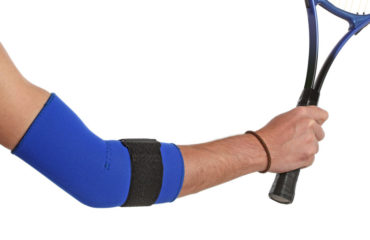The term tennis elbow is a bit confusing. Yes, patients can get the injury from playing lots of tennis, this was recently highlighted by British tennis star Andy Murray suffering from the injury, but tennis is not the only way the injury is suffered. In fact, most patients do it just sat in their cubicle typing away on a keyboard! For those with the injury it can be difficult to get back to their healthy and pain-free selves – and so new therapies are constantly being trialed to get patients back to their best. One of these is platelet-rich plasma therapy, which got a boost from some new research suggesting its potential power last month.
What is tennis elbow?
Tennis elbow is often referred to by physicians as “lateral epicondylitis”. This is because the injury is caused by inflammation of the lateral epicondyle of the elbow. It usually occurs after repetitive movements that overwork and overuse the tendons. Patients may experience a number of symptoms that include:
- Pain in the elbow or upper forearm
- Pain when gripping objects like a pen
- Pain when doing a twisting movement
What is platelet rich plasma therapy?
Platelet-rich plasma therapy has gotten a lot of media attention in recent weeks. It opens up new and exciting opportunities for a whole host of conditions but improving the bodies natural ability to heal. Platelet-rich plasma therapy typically happens in a number of steps:
- A sample of the patient needing treatments blood is taken
- The blood is centrifuged (spun at a very fast speed) to separate out the different components of the blood
- The platelets and plasma are removed from the centrifuge
- The platelets and plasma are injected back into the patient – into the area of the body that needs to heal (eg the elbow)
Does platelet-rich plasma therapy work for tennis elbow?
There has been mounting evidence that the technique works for conditions such as osteoarthritis or tendinopathies but now a paper suggests it also works for lateral epicondylitis (tennis elbow). A study published online in April this year looked at how often patients who had PRP therapy for their tennis elbow had surgery for the condition. The study published online in Orthopedic Proceedings found:
- Before the introduction of PRP injections, an average of 12.75 patients a year underwent arthroscopic release for tennis elbow at their hospital
- Since the PRP injection was introduced only 4.25 patients a year underwent surgery.
They conclude that
“we consider PRP injection, for intractable lateral epicondylitis of the elbow, not only a safe but also very effective tool in reducing symptoms and have shown it has reduced the need for surgical intervention in this difficult cohort of patients.”
If you or somebody you know is suffering from tennis elbow – and wants to consider new and alternative options before turning to surgery – then get in contact with a specialist center that offers the therapy.




